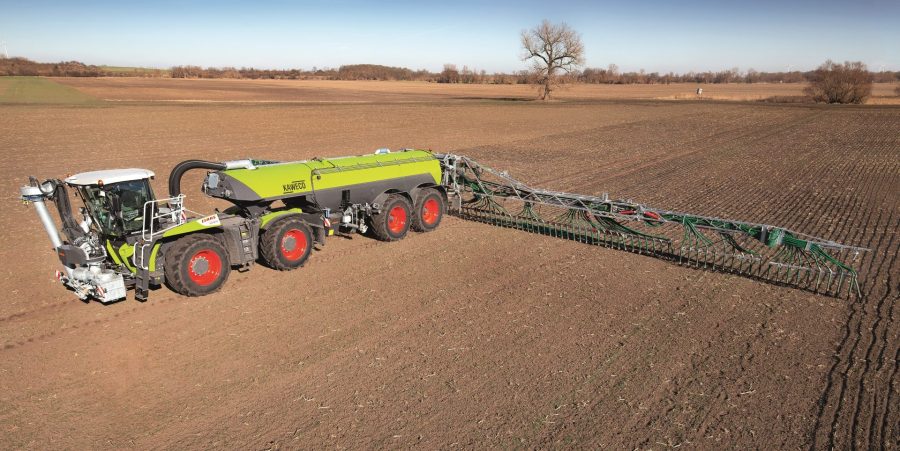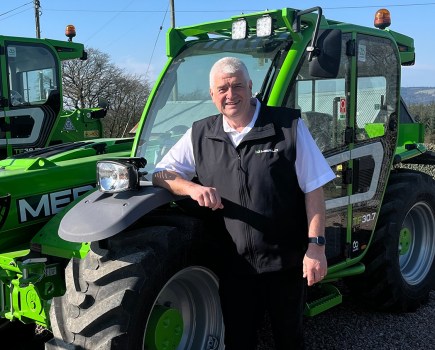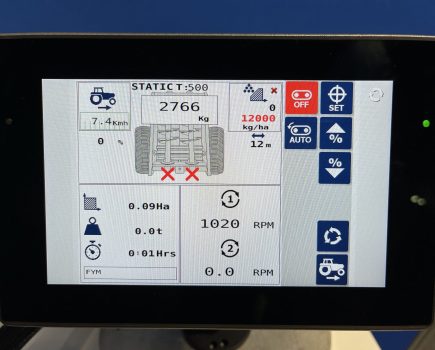Anyone that has ever walked the Agritechnica halls cannot fail to have missed the Claas Xerion/Kaweco slurry tanker combination. We’ve found out a bit more about some of the slurry solutions developed by the Dutch company for the Xerion.
The 28m³ twin axle swan neck version on display at Agritechnica 2019 (one of the first with 2.15m diameter tyres), is the newest, but Kaweco (Kamps de Wild), the Dutch Claas importer since 1954, has been a partner on the slurry front since the launch of the Xerion in 1993.
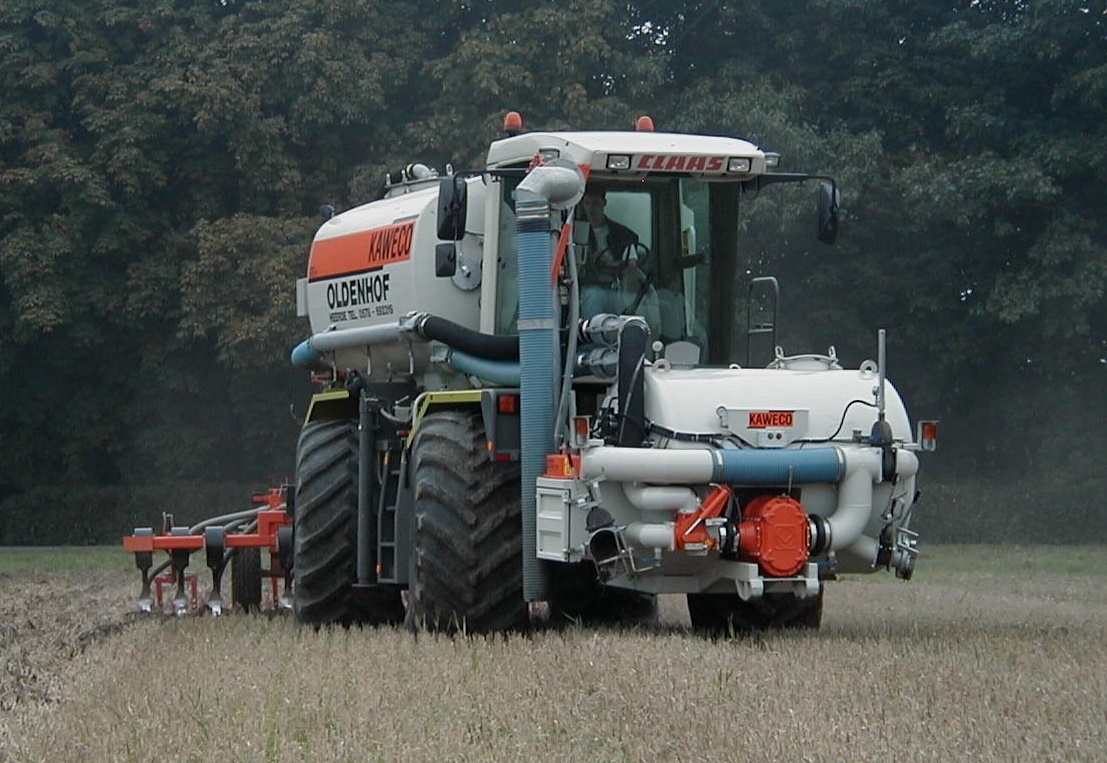
Kaweco supplied the slurry solution for the first Xerion in 1993.
The swan neck format, which first appeared on the Xerion 3300 Trac VC (central fixed cab), quickly found favour in the Netherlands, England and Germany. Things really took off at the end of 2015, though, when Kaweco developed the 16m³ poly-tanker design for the Xerion 4000 Saddle Trac.
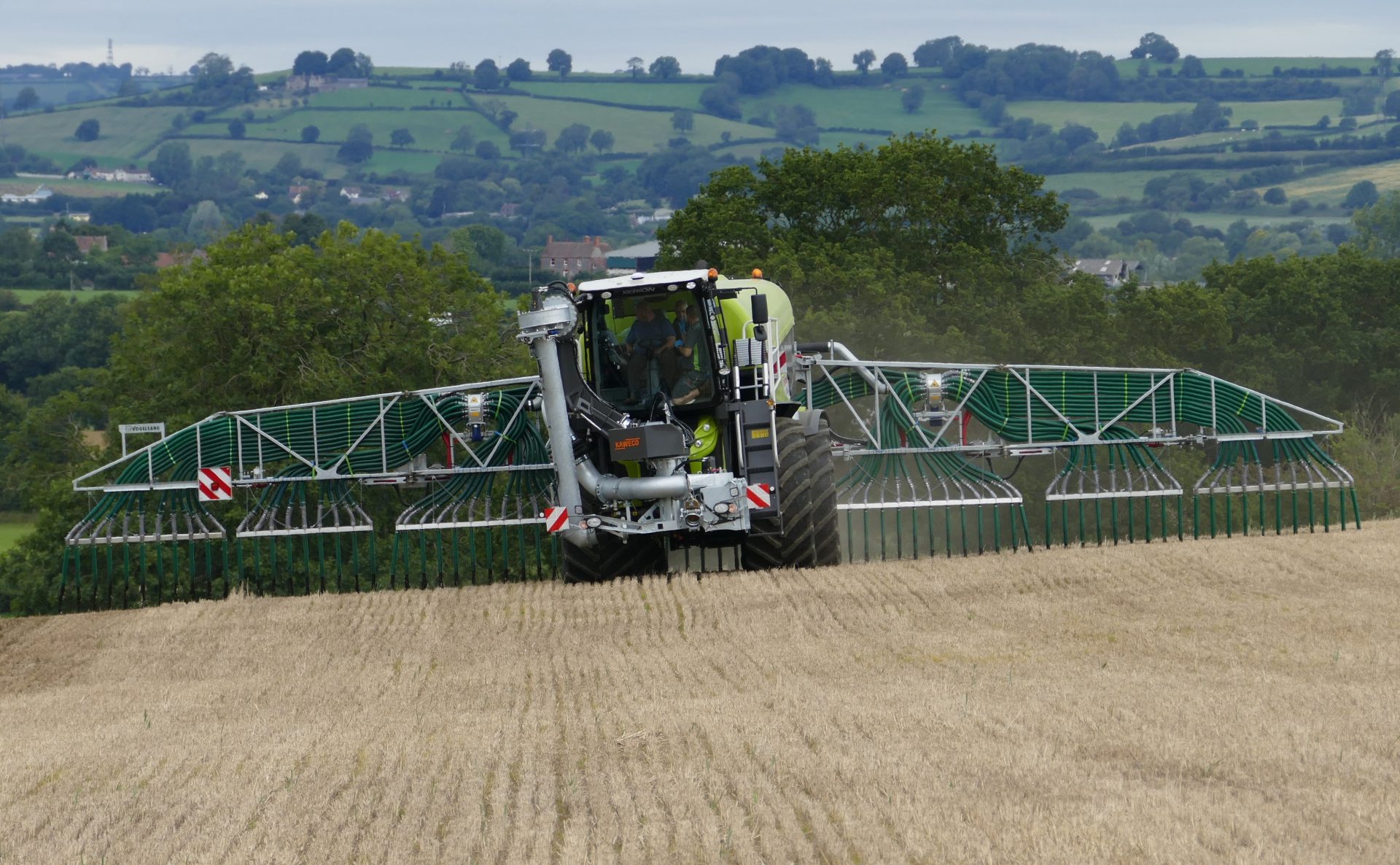
Saddle Trac (Xerion 4200) popularity is on the increase and Kaweco expects the numbers to continue to grow. The Saddle Trac fitted with a 16m³ poly tank is the most popular in the UK.
A feature of this was that it could be fitted with the Double Twin Shift (four wheels on one axle). The two outer wheels slid out hydraulically by 50cm to spread the weight over a larger area.
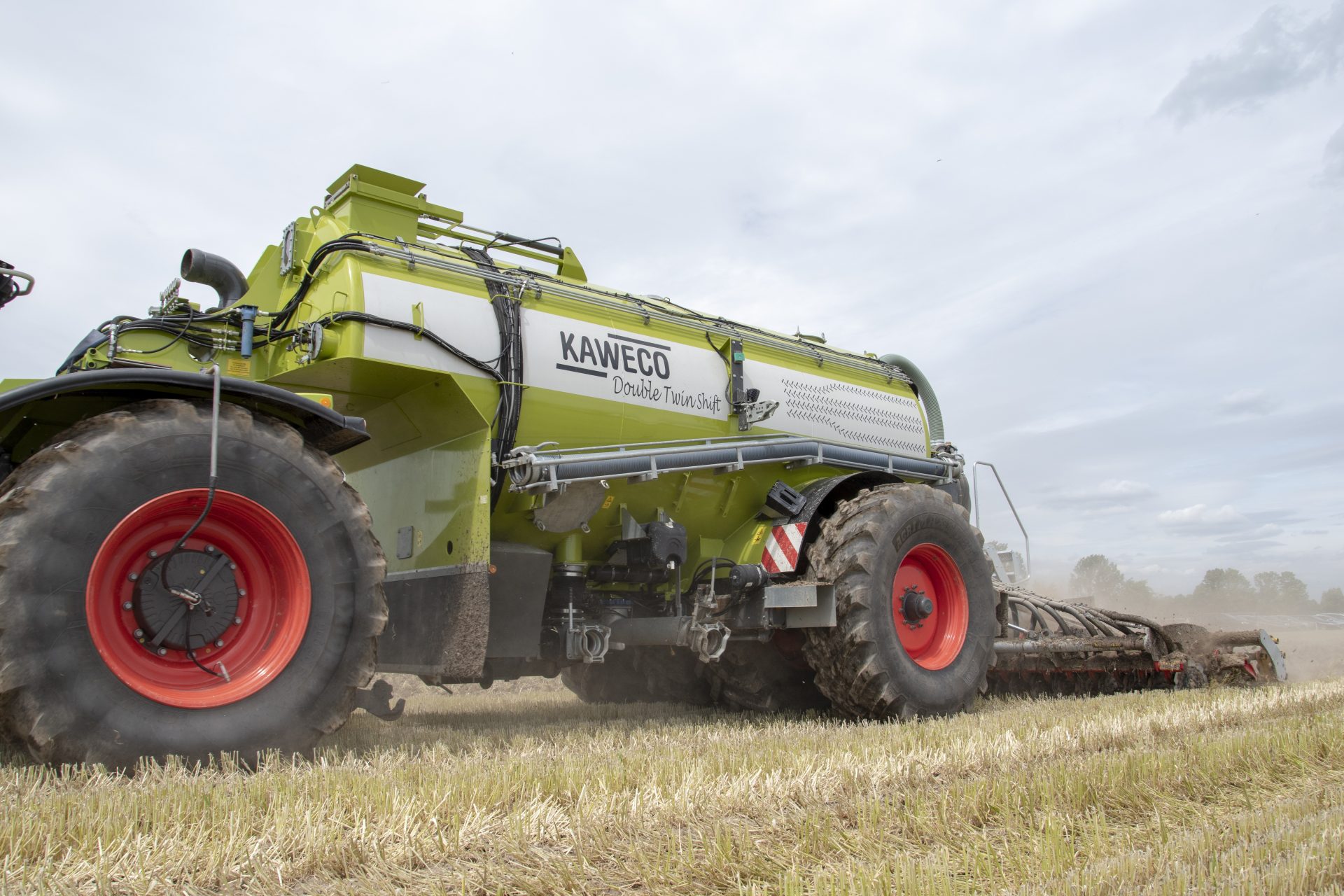
The Double Twin Shift option sees the two outer wheels slide out hydraulically by 50cm.
This option is also available today on swan neck tandem (24.5m³, 26m³ and 28m³) and triple-axle (30m³ and 32m³) formats for the Trac VC (Variable Cab). The tank on the latter has a length of nearly 13.0m, and when connected to the Xerion stretches to a combined length of around 17.5m (includes front unit).
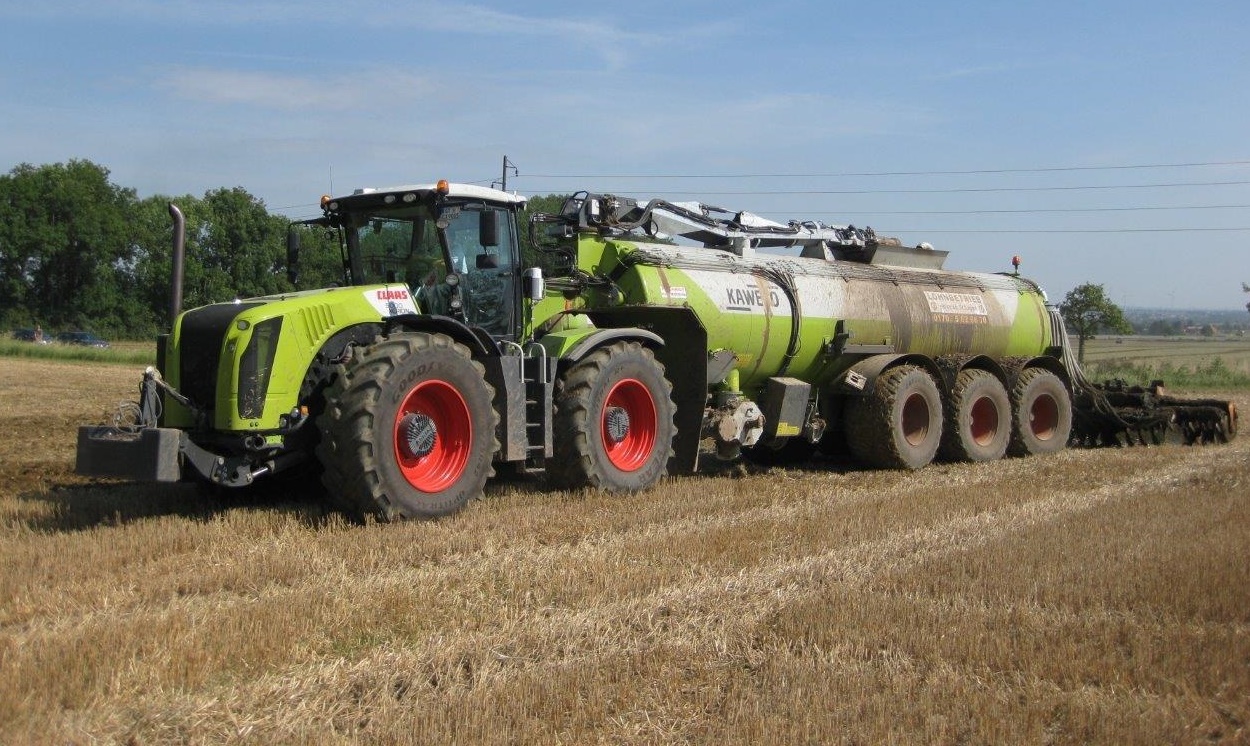
The tank on the triple-axle version stretches to a length of nearly of nearly 13.0m, and with the swan neck and Xerion a combined length of approx. 17.5m.
A few years ago, Kaweco also produced slurry tanks for SGT, including the tanks for the first Xerions. Today though, the focus is 100% on Kaweco-branded tanks for the Xerion, popular hosts being the new 462hp 4200 and 490hp 4500.
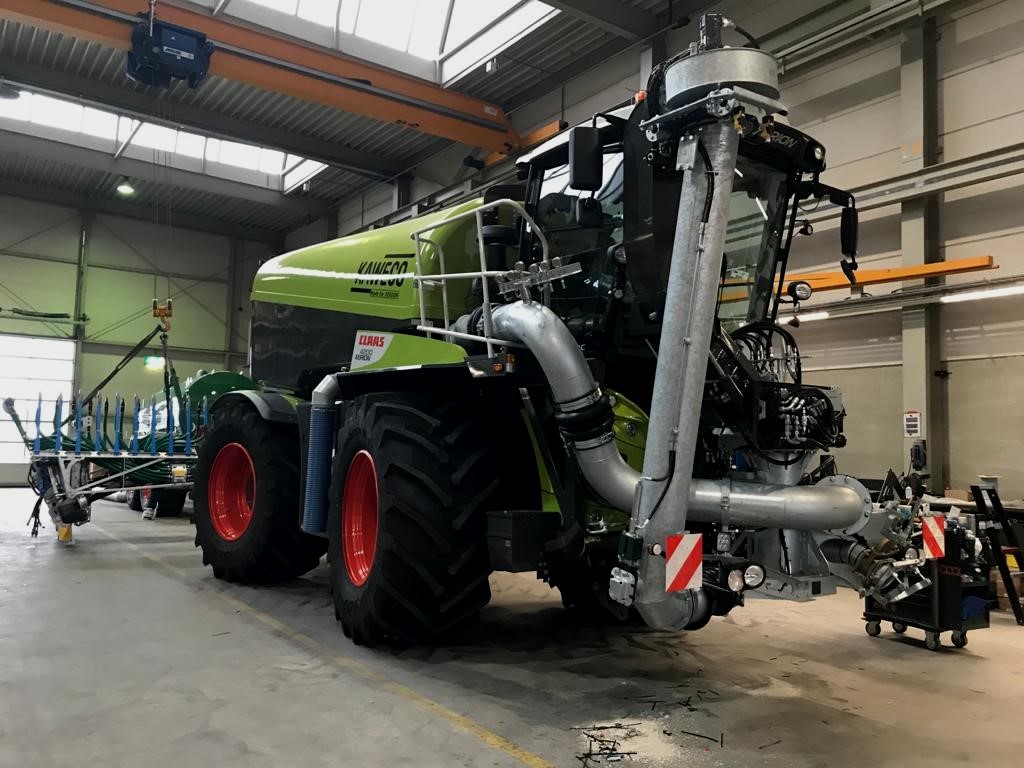
Most Xerions are delivered from the Claas factory in Harsewinkel to Kaweco HQ at the Dutch town of Hengelo. The Dutch firm designs and manufactures the tanks and swan neck in-house. The paintwork is the only job that is outsourced.
It depends on the product planning, but if everything goes the way it should do then it takes 2-4 weeks to complete the works. It takes a bit longer for a swan neck, and the timeframe does not include making the tanker.
Kaweco’s David Wunderink confirms that a machine has been delivered to Australia and one to Iceland. “France is an up and coming market and there have been a few enquiries from Scotland,” he says. “Germany is the number one market for the swan neck trailers, though, followed in second place by England.”
The most popular tank size is 28m³. British contractor RC Baker ordered this size with its new swan neck tanker on a Xerion 5000, which arrived in September.
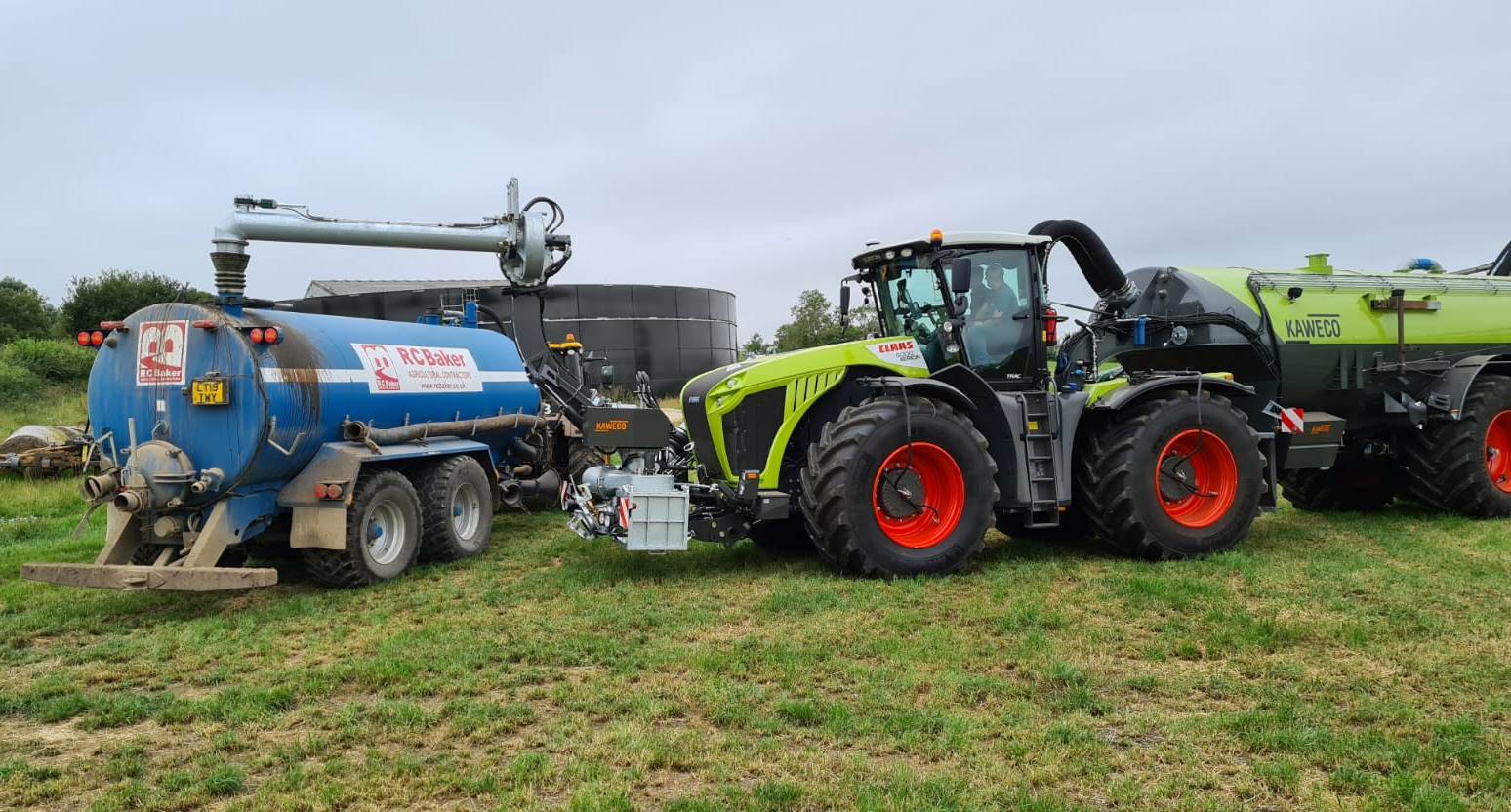
British contractor RC Baker’s new swan neck tanker (28m³) on a Xerion 5000.
Precise numbers are off-limits and quoting prices is difficult. Most swan neck tankers pull a 30.0m or 36.0m dribble boom, the latter of which can cost upwards of €100,000. This is without the cost of the rest of the tanker and Xerion.
The slurry solutions for the Xerion are one of the Dutch company’s most important products. “Contractors like the tractor’s high capacity, pulling power and good weight distribution,” says Mr Wunderink.
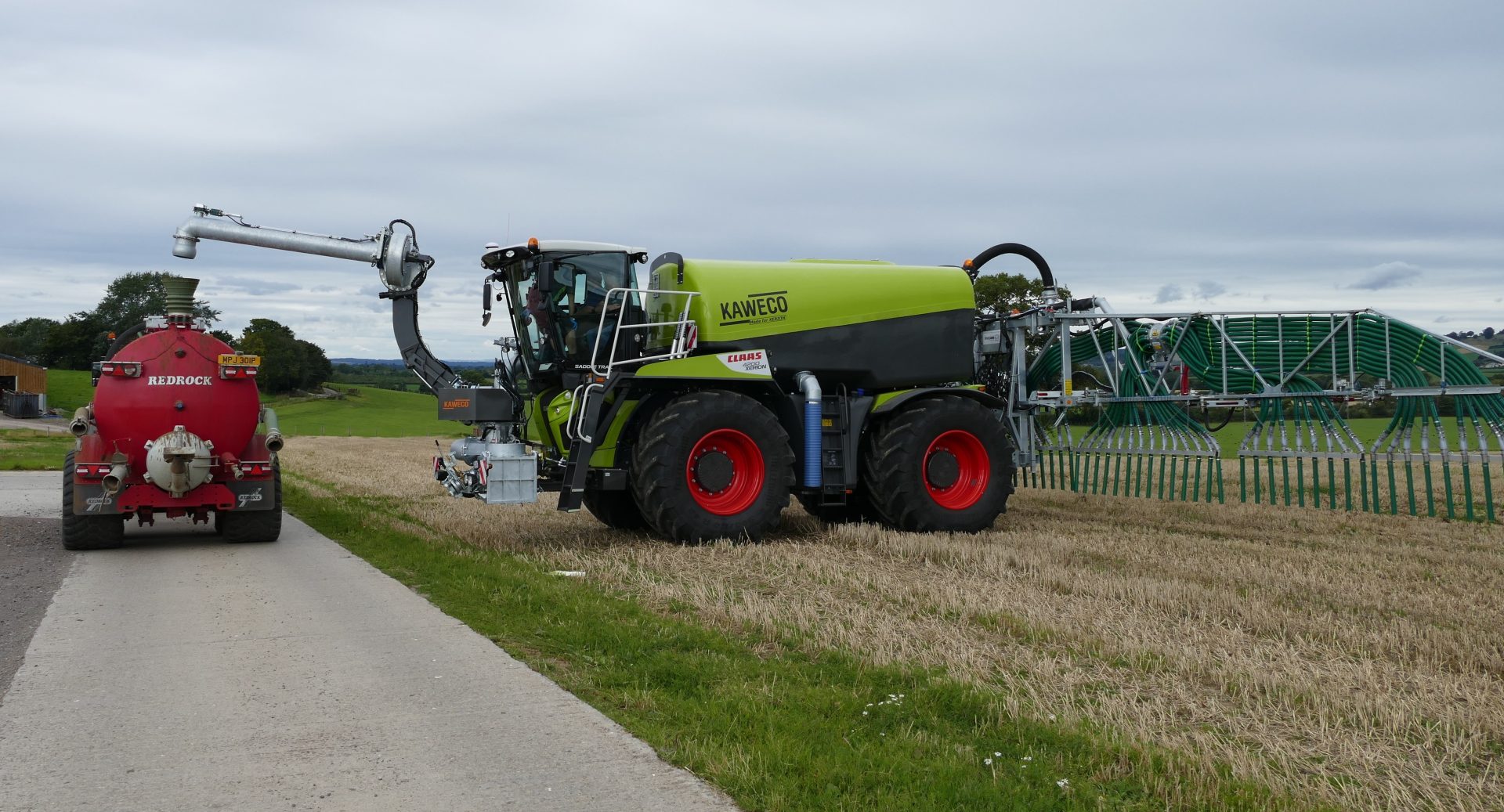
British contractor Martin Haskett recently took delivery of a second Xerion 4200 with 16m³ poly tank.
Looking ahead, the power increases each time a new Xerion model is launched. More power is always good on the hills, but Kaweco has not yet been asked to build even bigger slurry tanks, and anyway, it is restricted by axle weight loadings.
Neither has it been asked to make a tracked version for fitting to the newly-developed rubber-tracked TS versions of the 4500 and 5000 (530hp). Not yet anyway.

